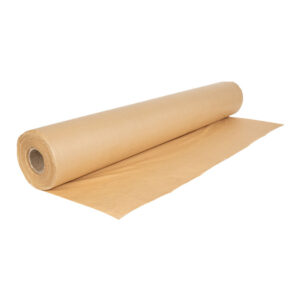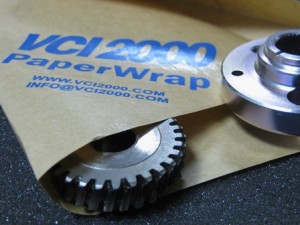Rust, the insidious adversary of metal, never takes a break. Whether it’s machinery, automotive parts, or valuable tools, if left unprotected, corrosion can silently eat away at the integrity of metals, causing irreparable damage. However, the battle against rust has a powerful ally: VCI poly bags. In this comprehensive guide, we will explore the relentless nature of rust, the science behind VCI technology, and how VCI poly bags stand guard to prevent corrosion.
Unveiling the Silent Menace of Corrosion in Metal Goods
In the vast realm of industry and commerce, metal goods stand as the backbone of countless sectors. However, they face a relentless foe—corrosion. This section explores the insidious nature of corrosion, its different manifestations, and the profound implications it holds for metal items during storage and transportation. As we embark on this journey, the importance of preventing corrosion becomes evident, setting the stage for the role of VCI poly bags in safeguarding against this silent menace.
Corrosion: The Silent Culprit
Corrosion, often personified as rust, is a chemical process that gradually eats away at the surface of metals. From the majestic steel structures of skyscrapers to the intricate components within machinery, no metal is immune to the transformative effects of corrosion. Whether it’s the oxidation of iron or the tarnishing of copper, the consequences of corrosion are far-reaching, impacting both the functionality and aesthetics of metal goods.
The Threat During Storage and Transit
Metal items are particularly vulnerable to corrosion during periods of storage and transportation. Warehouses, where metal goods await distribution, can expose them to fluctuating humidity levels and temperature variations. The journey across oceans and continents presents additional challenges, including exposure to corrosive elements like saltwater, which can accelerate the corrosion process. As we delve into the nuances of corrosion, the urgency of adopting effective preventive measures becomes apparent.
Decoding VCI Technology: An Invisible Shield Against Rust
VCI poly bags emerge as a groundbreaking solution to the pervasive threat of corrosion. This section unravels the intricate science behind VCI technology, shedding light on how these poly bags actively combat rust. Understanding the mechanisms behind VCI technology is crucial in appreciating how these bags serve as an invisible shield, tirelessly working to prevent corrosion and ensure that “Rust Never Sleeps.”
The Foundation of VCI Technology
At the heart of VCI poly bags lies a sophisticated technology designed to disrupt the corrosion process. VCI compounds, embedded within the polyethylene matrix of the bags, release vapors that form a protective layer on metal surfaces. These vapors create a molecular barrier, inhibiting the electrochemical reactions that lead to corrosion. The effectiveness of VCI technology lies in its ability to reach even the most intricate parts of metal items, providing comprehensive protection.
An Invisible Shield Against Corrosion
Unlike traditional methods of corrosion prevention that involve coatings or sacrificial anodes, VCI poly bags offer a unique advantage—they provide an invisible shield. This shield is not limited to the outer surfaces of metal goods but extends to recesses and hard-to-reach areas. As we delve deeper into the science of VCI, the unparalleled protection it offers becomes evident, showcasing why these poly bags are indispensable in the fight against corrosion.
Versatility in Action: Customizing VCI Poly Bags for Different Metals
Metal goods come in a myriad of forms, each with its own set of challenges when it comes to corrosion. In this section, we explore how VCI poly bags stand out as versatile solutions, offering customized protection for diverse metals. From ferrous to non-ferrous metals, the adaptability of VCI poly bags ensures a tailored defense against corrosion, addressing the unique characteristics of each metal type.
Ferrous Metals: Prone to Red Rust
Ferrous metals, such as iron and steel, are particularly susceptible to red rust—a form of corrosion that can compromise the structural integrity of metal items. VCI poly bags, particularly designed for ferrous metals, launch inhibitors that shape a protecting protect in opposition to pink rust. The section discusses how VCI technology addresses the specific challenges posed by ferrous metals and showcases real-world examples of successful corrosion prevention.
Non-Ferrous Metals: A Nuanced Approach
Non-ferrous metals, including aluminum, copper, and alloys, present a different set of challenges when it comes to corrosion. This part of the discussion focuses on how VCI poly bags are tailored to address the nuances of non-ferrous metals. Whether it’s protecting against tarnishing, oxidation, or other forms of corrosion, VCI poly bags demonstrate their versatility in providing comprehensive defense for a wide range of metal goods.
Continuous Protection: From Warehouse to World
The battle against corrosion extends beyond the point of sealing metal goods within VCI poly bags; it encompasses the entire journey from warehouses to destinations across the globe. This section delves into how VCI poly bags actively combat corrosion during storage and shipping, providing a continuous shield that ensures metal items arrive at their destination free from the clutches of rust.
Continuous Protection in Warehouses
Warehouses, where metal goods await distribution, can be breeding grounds for corrosion due to fluctuating environmental conditions. VCI poly bags, once applied to metal items, create a protective environment that withstands the challenges posed by varying humidity levels and temperature fluctuations. Real-world examples illustrate how VCI poly bags effectively shield metal goods from corrosion during their stay in warehouses.
Guardians of the Shipping Container
The journey of metal goods doesn’t end at the warehouse; it extends to shipping containers, trucks, and other modes of transportation. VCI poly bags continue their role as guardians, preventing corrosion during the rigors of shipping. Whether crossing oceans or traversing continents, metal items sealed within VCI poly bags remain protected, showcasing the practical application of VCI technology in real-world shipping scenarios.
Beyond Prevention: The Economic and Environmental Wisdom of VCI Poly Bags
The efficacy of VCI poly bags goes beyond corrosion prevention; it extends to economic and environmental benefits. In this final section, we explore how choosing VCI poly bags as a corrosion prevention solution makes economic sense and contributes to sustainable business practices.
Economic Benefits: Cost-Effective Corrosion Prevention
Investing in corrosion prevention measures can be a substantial cost for businesses dealing with metal goods. VCI poly bags offer a cost-effective alternative by eliminating the need for elaborate coatings or costly corrosion protection methods. This part of the discussion emphasizes how businesses can achieve significant cost savings by adopting VCI poly bags as part of their corrosion prevention strategy.
Environmental Impact: A Sustainable Choice
As businesses worldwide strive to adopt sustainable practices, the environmental impact of packaging choices comes under scrutiny. VCI poly bags stand out as a sustainable choice, being recyclable and environmentally friendly. This section explores how businesses can contribute to eco-friendly practices by choosing VCI poly bags, aligning with the global push for sustainability in manufacturing and logistics.
In conclusion, in the vast tapestry of industry and commerce, the battle against corrosion is an ongoing struggle. “Rust Never Sleeps: How VCI Poly Bags Prevent Corrosion” has journeyed through the nuances of corrosion, the science behind VCI technology, and the versatile applications of VCI poly bags in safeguarding diverse metals. From warehouses to shipping containers, VCI poly bags stand as silent guardians, ensuring that metal items arrive at their destination free from the pervasive threat.






